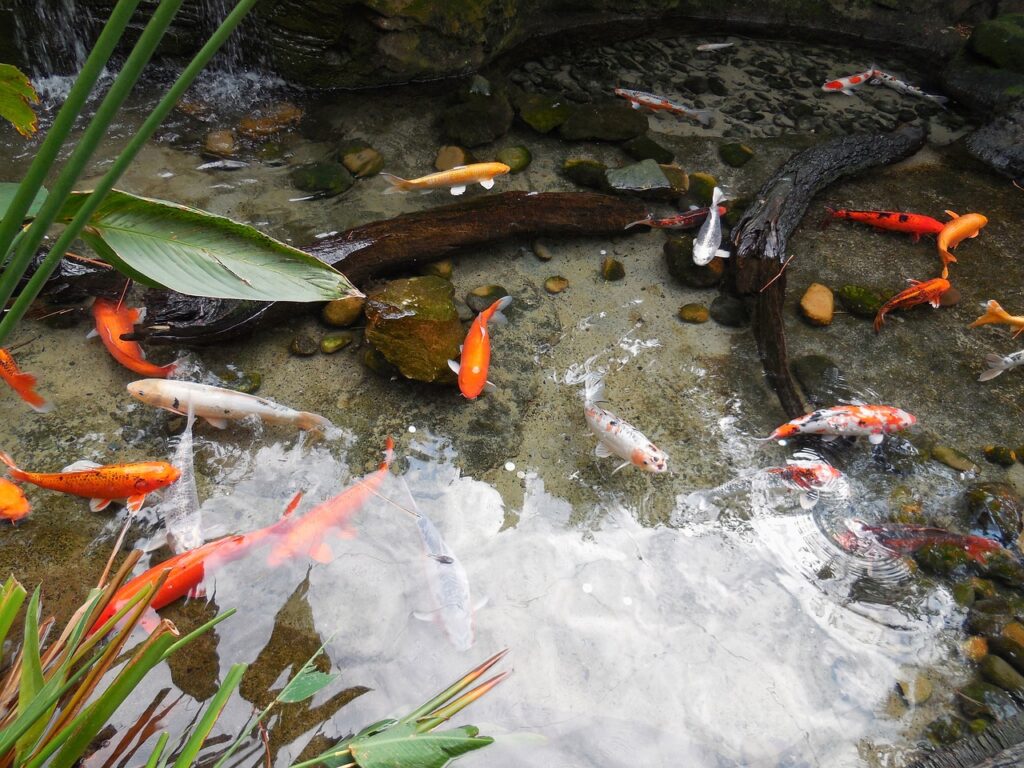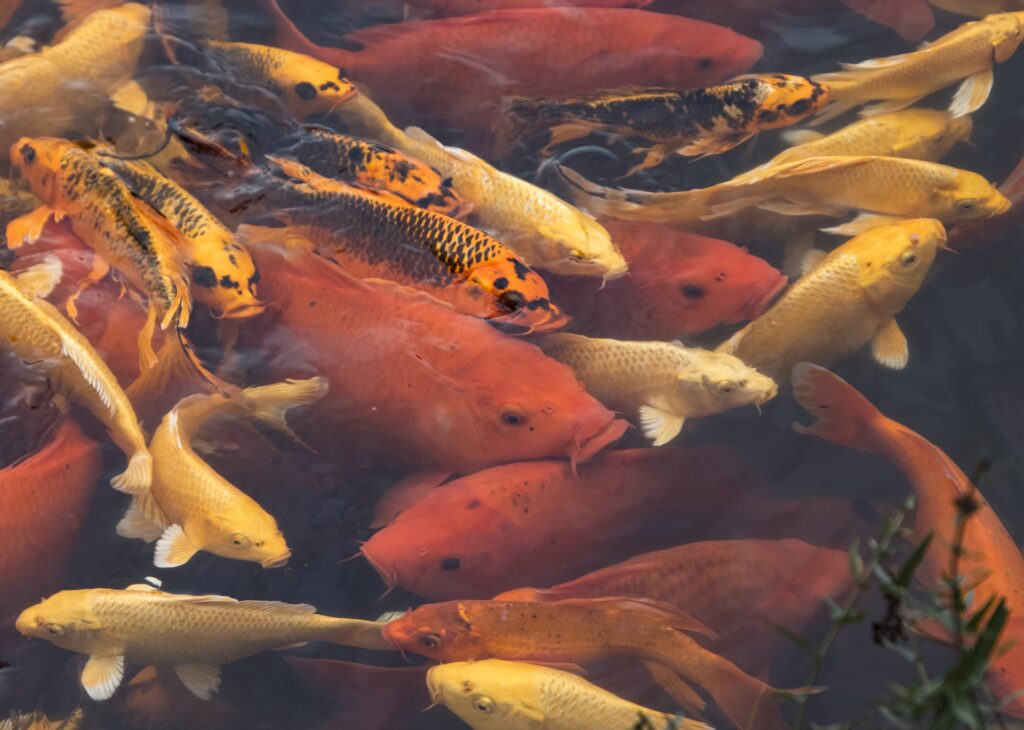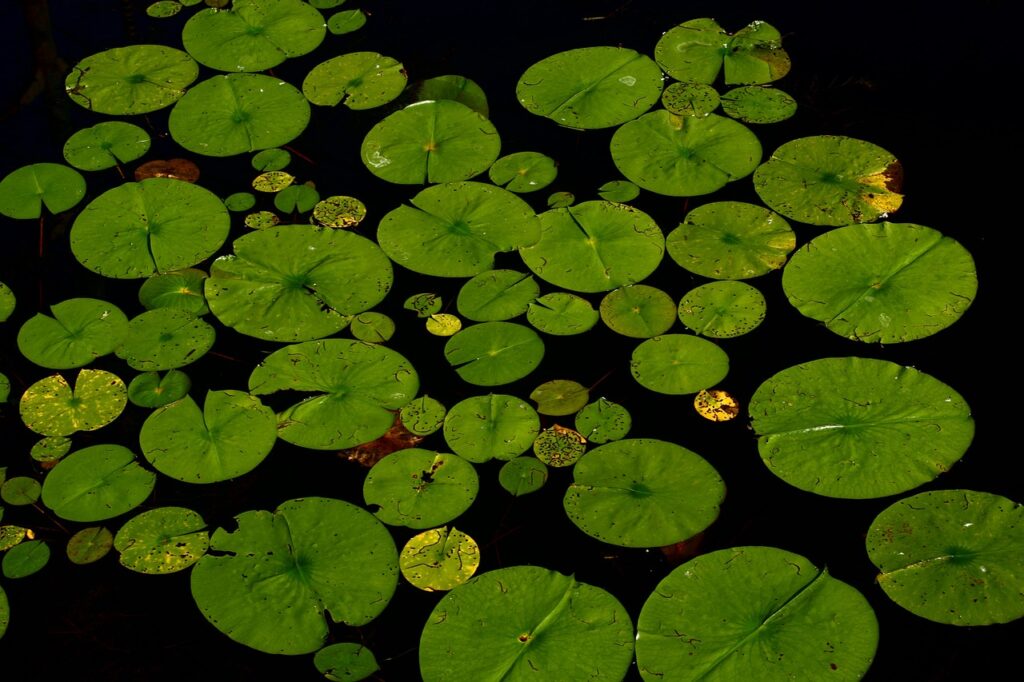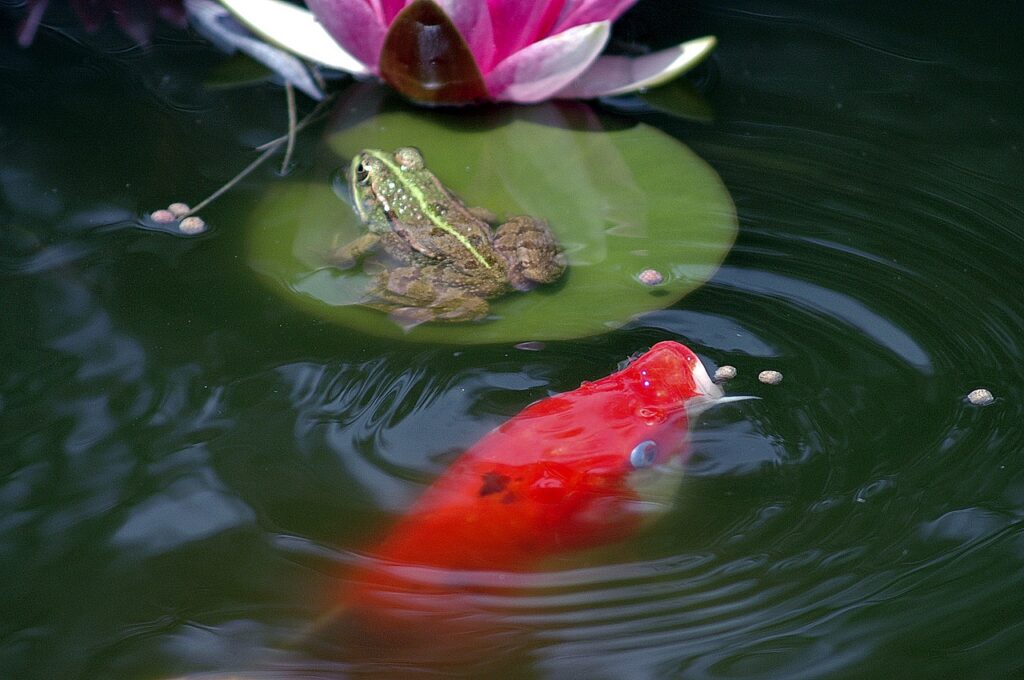Have you ever wondered how many fish you need to start a pond? If you’re thinking about creating a beautiful aquatic sanctuary in your backyard, it’s essential to understand the importance of fish stocking.
Not only can fish enhance the aesthetic appeal of your pond, but they also contribute to its ecological balance. We will explore the factors that determine the ideal number of fish needed to kickstart your pond and maintain a thriving aquatic ecosystem.
So, if you’re ready to dive into the world of pond ownership, keep reading to discover the magic number of fish needed to make your pond come alive.

Type of Pond
Koi Pond
When deciding to build a pond, one of the first considerations is the type of fish you want to keep. A popular choice for many pond enthusiasts is the koi pond. Koi fish are large and vibrant, known for their beautiful colors and patterns. They can grow quite large, requiring a pond of substantial size to accommodate their needs. Koi ponds often include plants and decorative elements, creating a visually stunning and serene environment.
Goldfish Pond
For those looking for a more low-maintenance option, a goldfish pond may be the way to go. Goldfish are hardy and adaptable, making them suitable for ponds of different sizes. They come in a variety of colors and sizes, providing an attractive display in any backyard. Goldfish ponds can be simpler in design compared to koi ponds, making them a great choice for beginners or those with limited space.
Mixed Fish Pond
A mixed fish pond offers the opportunity to keep a variety of fish species together. This can create a more dynamic and diverse ecosystem within the pond. However, it is important to consider the compatibility of the fish species chosen, as some may have different temperature or feeding requirements. A mixed fish pond allows for flexibility and the ability to personalize the pond according to your preferences.
Size of Pond
Calculating Pond Surface Area
To ensure the well-being and happiness of your fish, it is crucial to determine the appropriate size for your pond. One way to calculate the size is by considering the surface area. A general rule of thumb is to have at least 10 square feet of surface area for every inch of fish. For example, if you plan to have 10 inches of fish, your pond should be at least 100 square feet in size.
Determining Fish Stocking Density
Another factor to consider when determining the size of your pond is the fish stocking density. This refers to the number of fish you can safely and comfortably keep in your pond. A low stocking density is recommended to maintain a healthy and balanced ecosystem. Overcrowding can lead to poor water quality and increased stress for the fish. It is advisable to consult with experts or reference stocking density charts specific to the fish species you plan to keep.
Fish to Water Ratio
General Rule of Thumb
A general rule of thumb when considering the fish to water ratio is to have no more than one inch of fish per ten gallons of water. This allows for sufficient space and ensures proper oxygenation of the water. However, it is important to note that this ratio may vary depending on factors such as temperature, filtration system, and the specific needs of the fish species.
Considerations for Different Fish Species
Different fish species have varying requirements when it comes to the fish to water ratio. Koi fish, for example, require more space due to their large size and higher waste production. It is generally recommended to have at least 500 gallons of water per adult koi fish. Smaller fish, such as goldfish or smaller species of tropical fish, may require less space. It is crucial to research the specific needs of the fish species you plan to keep to ensure their well-being.
Pond Ecosystem
Balancing the Ecosystem
A well-balanced pond ecosystem is key to maintaining a healthy environment for your fish. This involves having a variety of organisms present, such as beneficial bacteria, plants, and other aquatic life. These organisms play crucial roles in the ecosystem, helping to break down waste, control algae growth, and provide natural sources of food for the fish. Creating a diverse ecosystem can promote overall pond health and reduce the need for excessive chemical treatments.
Understanding Biological Filtration
Biological filtration is an essential component of a pond ecosystem. It relies on beneficial bacteria to break down harmful substances such as ammonia and nitrite, which can be toxic to fish. This process occurs within the filtration system, where the bacteria colonize and convert these harmful compounds into less harmful forms. It is important to maintain proper filtration to ensure the water remains clean and safe for the fish.

Fish Growth and Reproduction
Considering Fish Growth Rates
When planning a pond, it is important to consider the potential growth rates of the fish species you intend to keep. Koi fish, for example, can grow quite large and require sufficient space as they reach their full size. Having an understanding of the growth rates can help you determine the appropriate size of the pond from the start, preventing the need for future expansions or relocations.
Allowing for Reproduction
Some pond enthusiasts may be interested in allowing their fish to reproduce in their backyard pond. This can be a rewarding experience and contribute to the overall ecosystem. However, it is important to ensure the pond is large enough to accommodate the increased population and provide adequate food and shelter for the young fish.
Monitoring the reproductive behavior and population growth is crucial to prevent overpopulation and potential strain on the ecosystem.
Water Quality and Oxygen Levels
Importance of Water Quality
Maintaining good water quality is essential for the health and well-being of your fish. Regular testing for pH, ammonia, nitrite, and nitrate levels is crucial to ensure proper water conditions. Monitoring and adjusting these parameters as needed can prevent stress and diseases in the fish.
Additionally, ensuring the water source is free from contaminants such as chlorine is vital for the overall health of the pond.
Adequate Oxygenation for Fish
Fish require sufficient oxygen levels in the water to thrive. This can be achieved through various methods, including the use of aeration systems such as air pumps or waterfalls. These mechanisms help to circulate and oxygenate the water, preventing oxygen depletion and creating a healthier environment for the fish.
Adequate oxygenation is especially important during warmer months or in ponds with a high fish stocking density.

Feeding and Nutrition
Choosing the Right Fish Food
Providing your fish with a balanced and nutritious diet is crucial for their health and growth. There is a wide variety of commercially available fish food options suitable for different fish species. It is important to choose a high-quality food that meets the specific nutritional needs of your fish. Consulting with a knowledgeable professional or doing thorough research will help ensure you make the right choice.
Feeding Frequency and Quantity
Establishing a regular feeding schedule is important to prevent overfeeding or underfeeding your fish. It is recommended to feed your fish small portions multiple times a day, rather than one large feeding. This allows the fish to consume the food efficiently and prevents excessive waste.
Monitoring the fish’s behavior and adjusting the quantity of food accordingly can help maintain their health and prevent water quality issues.
Adding Fish to the Pond
Acclimating Fish to Water
When introducing fish to a new pond, it is crucial to acclimate them gradually to their new environment. This involves floating the fish in the pond in their transport bag or bucket for a period of time, allowing them to adjust to the temperature and water conditions.
This gradual introduction minimizes the stress on the fish and increases their chances of successfully adapting to their new home.
Quarantine and Disease Prevention
Before adding fish to your pond, it is advisable to quarantine them for a period of time. This helps to ensure they are free from any diseases or parasites that could potentially harm the existing fish population.
Quarantining also allows for observation of the new fish’s behavior, appetite, and overall health. This preventative measure is essential in maintaining a healthy and disease-free pond.
Maintenance and Care
Regular Water Testing
Regularly testing the water parameters is crucial to maintaining the health of your fish and the overall quality of the pond. This includes testing for pH, ammonia, nitrite, and nitrate levels. Monitoring these parameters and making adjustments as necessary will help prevent water quality issues and ensure the well-being of the fish.
Cleaning and Pond Upkeep
Proper maintenance and cleaning are necessary to keep the pond in optimal condition. Regular removal of debris, such as leaves, twigs, and excessive algae, helps to prevent water quality issues and maintain a clean environment for the fish. Additionally, periodic cleaning of filters and pumps is essential to ensure their efficiency and effectiveness.

Expansion and Population Control
Increasing Fish Stock
As your pond matures and the fish population grows, you may consider expanding the overall fish stock. However, it is important to do so gradually and ensure the pond can accommodate the increased population. Monitoring the water quality and observing the behavior of the fish will help determine if the pond can support additional fish.
Managing Overpopulation
Overpopulation can lead to various issues and can strain the ecosystem of the pond. To prevent this, it is essential to monitor the fish population and take necessary actions to control it.
This may involve selectively removing fish, providing alternative breeding options, or finding suitable homes for the excess fish. Managing the population is crucial to maintain a balanced and healthy pond ecosystem.
How Many Fish You Need To Start A Pond
In conclusion, starting a pond and keeping fish can be a rewarding and enjoyable experience. By considering the type of pond, size of the pond, fish to water ratio, pond ecosystem, fish growth and reproduction, water quality and oxygen levels, feeding and nutrition, adding fish to the pond, maintenance and care, and expansion and population control, you can create a thriving and harmonious environment for your fish.
With proper planning, attention to detail, and a little bit of care, your pond will become a tranquil oasis and a source of pride in your backyard. Knowledge is also important, understanding your pond, so take a look at ‘Can You Put Fish Straight Into A Pond‘, which will help.
